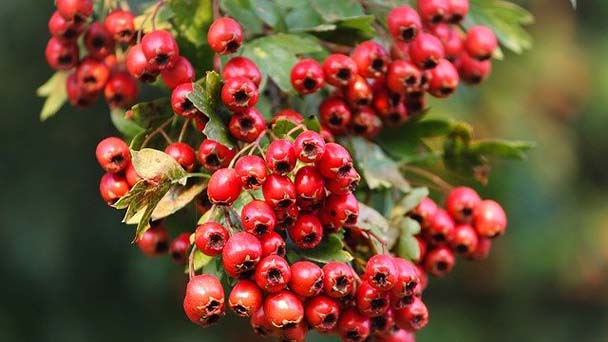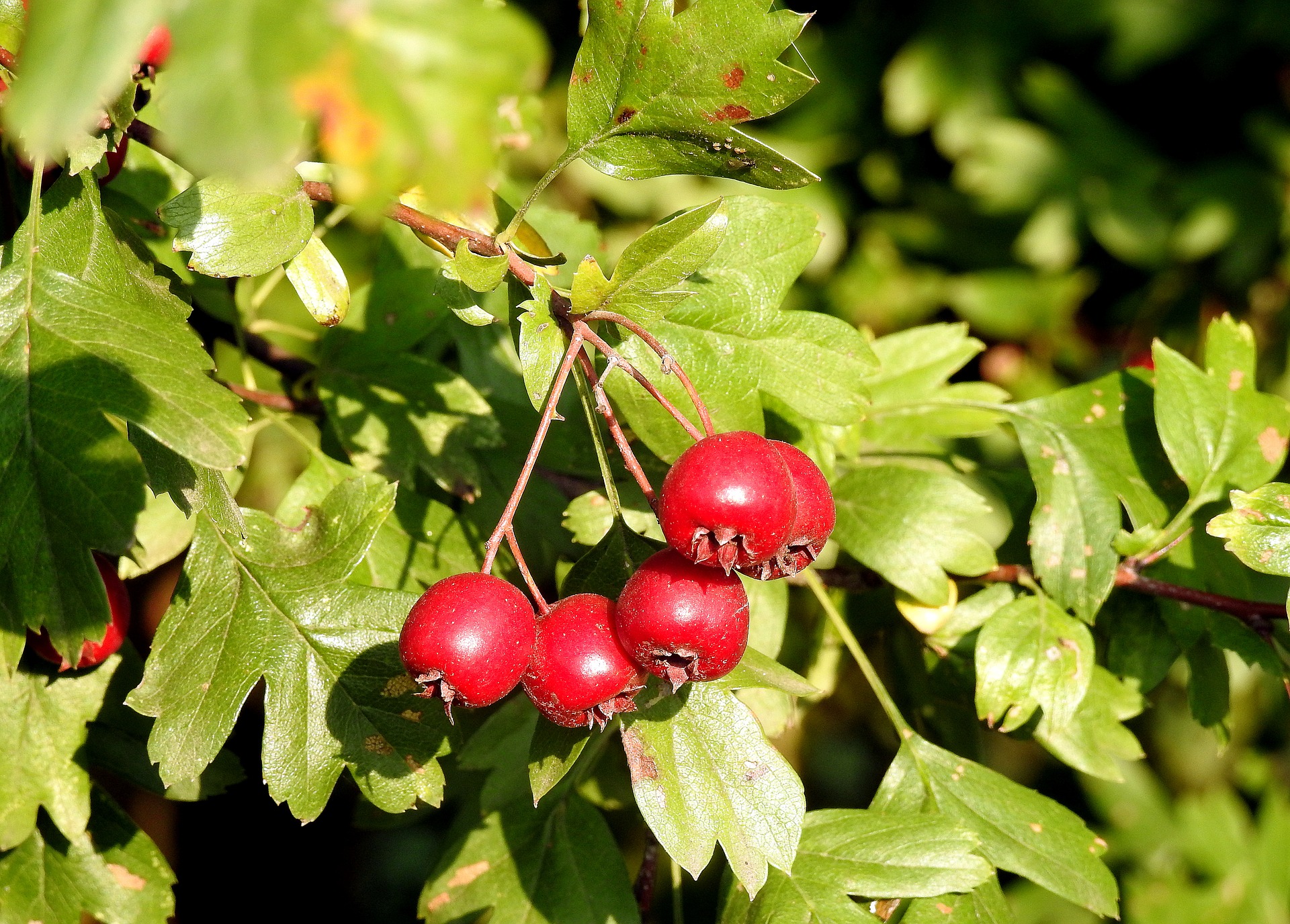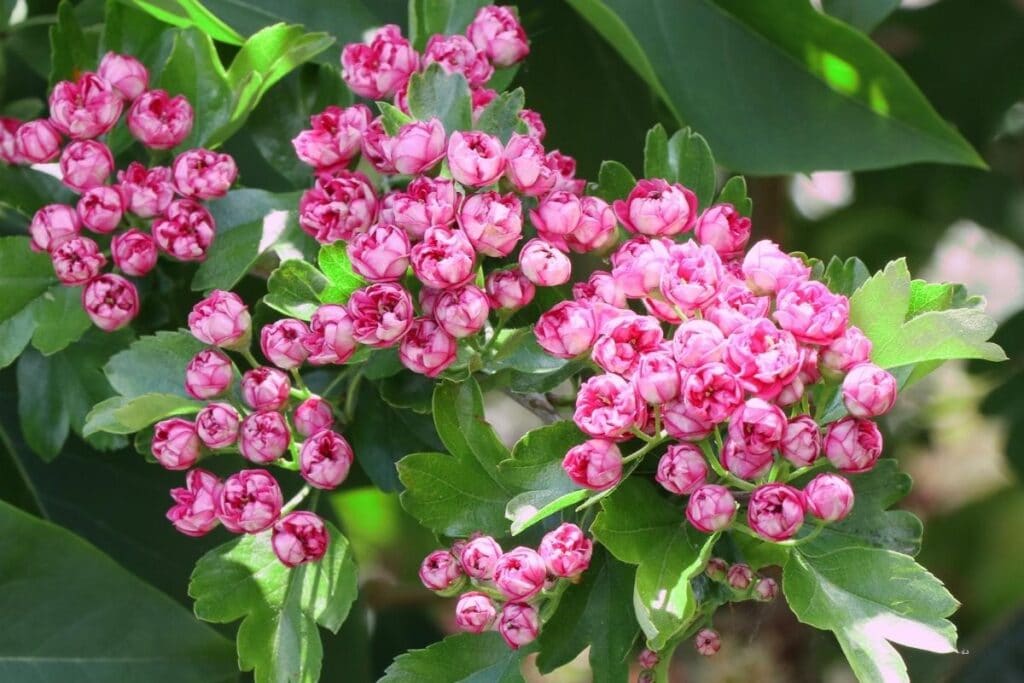Hawthorn berry Profile
Written by Joy
Sep 29 2020

Hawthorn berry is sweet and sour, and it can produce body fluid to quench thirst, and has high nutritional and medicinal value. Since ancient times, it has become a good medicine for invigorating the spleen and appetizing stomach, eliminating food and resolving stagnation, and promoting blood circulation and phlegm.
Leaf of the hawthorn berryFlower of the hawthorn berryFruit of the hawthorn berryApply base fertilizer in autumnTop dressing during flowering and fruiting periodPruning should be carefulWater in time before harvest
Hawthorn berry morphological characteristics
Leaf of the hawthorn berry
The leaf blade of Hawthorn berry is broadly ovoid or triangular-ovate, sparsely rhomboid-ovate, 5-10 cm long, 4-7.5 cm wide. It has deep lobes, and lobes are ovate-lanceolate or band-shaped, apex short and acuminate, with sharp sparse irregular heavy serrations on the edge, dark green and shiny on the top, sparse pubescent hairs along the veins below or beard hairs in the vein axils, There are 6-10 pairs of lateral veins, some reach the apex of the lobes, and some reach the cleavage of the lobes. The petiole is 2-6 cm long, glabrous. The stipules are grassy, sickle-shaped, with serrated edges.Flower of the hawthorn berry
Corymbs are multi-flowered, 4-6 cm in diameter. The total pedicel and pedicel are both pilose, and fall off after anthesis. The pedicel is 4-7 mm long; the bracts are membranous, linear-lanceolate, about 6- 8 mm. Flower diameter is about 1.5 cm. Calyx tube is campanulate, 4-5 mm long, densely covered with off-white pilose. Sepals are triangular ovate to lanceolate, apex gradually pointy, approximately as long as the calyx tube, and usually are glabrous on both inside and outside, or bearded at the top of the inside. Petals are obovate or subround, 7-8 mm long, 5-6 mm wide, white. Stamens are 20, shorter than petals, anthers pink.Fruit of the hawthorn berry
The fruit is nearly spherical or pear-shaped, 1-1.5 cm in diameter, dark red, with light-colored spots. It has 3-5 small nuclei, slightly ridged on the outside, and is smooth on both sides of the inside. Sepals fall off very late, leaving a round deep depression at the tip. Flowering from May to June, fruiting from September to October.Hawthorn berry growth habit and growing environment and distribution
The root growth ability of Hawthorn berry is strong, but the main root is underdeveloped and the lateral roots are shallowly distributed. Root system development gradually accelerates with the increase in temperature within a year. When the local temperature rises to about 6℃, the root system begins to grow. In June and July in summer, the total amount of root system increases sharply, quickly entering the peak of rooting, and then gradually declines into slowness growth period. Roots are prone to adventitious buds to form root tillers, which consume a lot of organic nutrients and affect the growth and yield of Hawthorn.

Hawthorn berry has strong adaptability, good yield, and the fruit can be stored and transported well. It is suitable for the development of mountain and sandy land. Hawthorn seedlings begin to bear fruit 2 to 4 years after planting, and they enter the fruiting period about 10 years, and the economic cultivation life can reach more than 100 years.
Hawthorn berry efficacy and role
Hawthorn berry contain a variety of vitamins, maslinic acid, tartaric acid, citric acid, malic acid, etc., as well as flavonoids, lactones, carbohydrates, protein, fat, calcium, phosphorus, iron and other minerals. The lipase can promote the digestion of fatty foods. It will promote the secretion of gastric juice and increase the function of endoenzyme. Hawthorn is also rich in calcium and carotene. The calcium content ranks first in fruits. The content of carotene is second only to jujube and kiwi fruit. It is most suitable for children to eat.Hawthorn berry is sweet, slightly warm in nature, and enters the spleen, stomach, and liver meridian It has the effects of digesting and invigorating the stomach, promoting blood circulation and removing blood stasis, and deworming. It is mainly used for meat and food stagnation, infant milk food stagnation, gastric abdominal pain, blood stasis amenorrhea, postpartum stasis, irritation, colic pain, hyperlipidemia, etc. Ancient Chinese medical scientists have long paid attention to the effect of Hawthorn berry in softening and hardening. When cooking hard chicken meat, adding a few Hawthorns makes it easy to rot, indicating that it has the effect of eliminating meat. Chinese medicine patent medicine all use Hawthorn as the main ingredient. Hawthorn also has the functions of dispelling silt, stopping bleeding, preventing heatstroke, and refreshing. now,
There are more than 50 traditional Chinese medicine formulas using Hawthorn as raw material.
Hawthorn berry cultivation
Apply base fertilizer in autumn
It is best to do it in time after fruit picking in late autumn, which can promote the absorption and accumulation of nutrients by the tree, which is conducive to the differentiation of flower buds. It is best to use organic fertilizer as the base fertilizer, with a certain amount of chemical fertilizer, and gardeners should mix the chemical fertilizer with organic fertilizer or the soil before applying it into the ditch to avoid root burning.Top dressing during flowering and fruiting period
The top dressing before flowering is mainly nitrogen fertilizer, generally about 25% of the annual application rate; the top dressing in the young fruit stage is mainly for the early differentiation of flower buds to improve the nutritional conditions; the top dressing in the fruit expansion period is mainly potassium fertilizer, which mainly promotes the growth of the fruit and improves the Hawthorn carbohydrate content. Fertilizing every year before flowering, young fruit period, and fruit expansion period can thicken the flower stalk and fruit stalk of Hawthorn berry, prevent flower and fruit drop, and increase the speed of fruit expansion.Pruning should be careful
The pruning of Hawthorn berry trees should be mainly in winter. Reconstruction and rejuvenation should be carried out. The whorled backbone branches and the outer dense large branches as well as competing branches, long branches, diseased branches, and weakened main branches should be selected. The buds undergo small renewal to cultivate a robust branch group. The method of re-cutting weak branches and rejuvenating and engraving the buds on the bare parts of the buds was modified. When wheel Edger, the wound is sealed and protected with a coral antiseptic film to prevent dryness and pests.Water in time before harvest
According to experiments, the Hawthorn orchard that can be watered at the right time before harvest can increase the yield by 20%-45% compared with the control orchard. The more drought conditions, the more obvious the increase in yield. In addition, watering the Hawthorn orchard before harvest can increase the differentiation rate of Hawthorn berry flower buds by more than 20%, and can reduce the large and small annual fruit and fruit drop before harvest.Latest Updated
- Benefits of Bugleweed - 7 Science-backed Health Benefits
- Bugleweed Dangers & Side Effects - Is It Poisonous?
- How to Plant Evergreen Trees - What You Should Know
- When to Plant Evergreens - Grow Guide for Evergreen Trees
- 12 Wonderful Evergreen Shrubs for Your Garden
- 12 Popular Evergreen Plants with Pictures for Beginners
- When And How To Prune A Lilac Bush Like a Pro
- How to Grow & Care for Lilac Vine (Hardenbergia Violacea)
- Japanese Lilac Tree (Syringa Reticulata) Care & Propagation Guide
- Shumard Oak Pros and Cons - What to Know
Popular Articles
- Winter maintenance of Antirrhinum Majus
- How to Grow Terminalia Mantaly Tree
- How to Grow and Care for Crossostephium Chinense
- How to grow Antirrhinum Majus in spring
- Peristeria Elata (Dove Orchid) Profile: Info & Care Guide
- Underwatered Snake Plant (Sansevieria Trifasciata) - Signs And How To Fix
- How to Care for Brazilian Jasmine Plant (Mandevilla Sanderi)
- How to Grow & Care for Graptopetalum Purple Delight in Summer
- Rosa Chinensis (China Rose): Plant Growing & Care Tips
- How to Care for Baby Sun Rose (Aptenia Cordifolia)